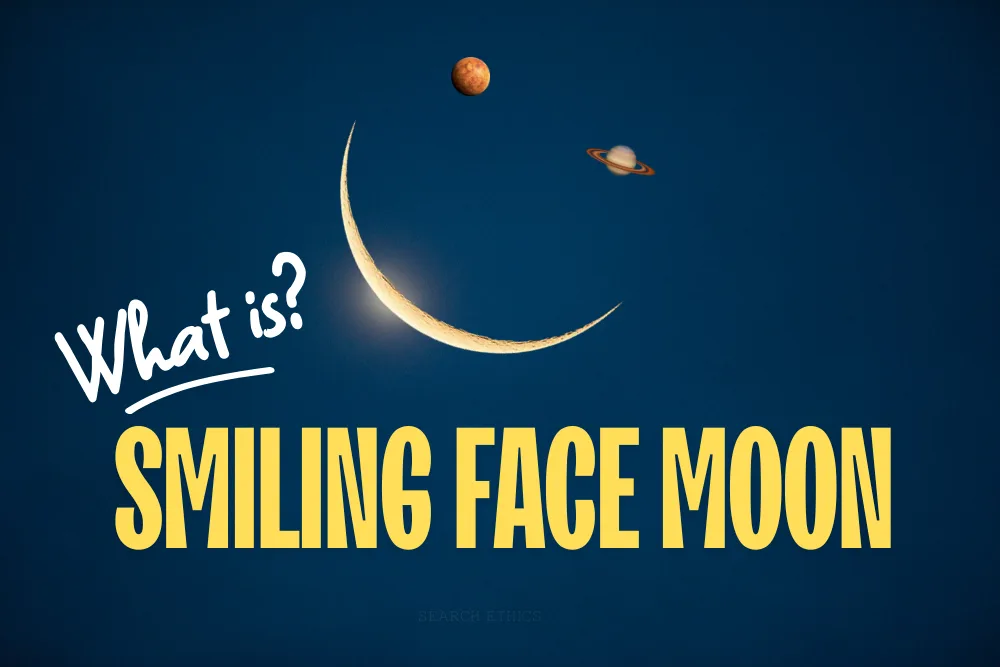Now Reading: Smiley Face Moon: Something You Have Never Seen!
-
01
Smiley Face Moon: Something You Have Never Seen!
Smiley Face Moon: Something You Have Never Seen!

The much-anticipated “smiley face moon” alignment on April 25, 2025, had skywatchers buzzing with excitement — but how close did reality come to the viral images spreading across the internet?
Let’s take a look at what actually unfolded in the early morning sky.
What is the Smiley Face Moon?
The term “smiley face moon” refers to a natural phenomenon where the crescent moon and two bright planets (in this case, Venus and Saturn) align in such a way that they resemble a smiling face in the sky. While this is not an official astronomical term, the nickname has gained popularity on social media and in pop culture due to the visual resemblance.
According to Space.com and EarthSky.org, the visual effect is caused by the positioning of these celestial bodies. Venus, known as the “morning star,” will shine brightly in the eastern sky just before dawn. Saturn, much dimmer, will appear slightly below and to the right of Venus. Completing the “smile,” the thin crescent moon will rise to the left of Saturn.
This creates a visual arc that resembles a smiling face — though with a slight tilt depending on your viewing location.

When and Where People Saw the Celestial Alignment
Skygazers had gathered early on April 25, looking east about an hour before sunrise to view the celestial alignment.
-
Uk & United States of America: In these regions, the planetary trio appeared tilted sideways, with the crescent moon and planets positioned close to the horizon.
-
Global Visibility: The event was visible in many parts of the world, though how clearly it was seen depended heavily on local weather and light pollution.
How Stargazers Prepared to View the Alignment
To get the best view of the alignment, observers followed some essential tips:
-
Chose a location with a clear, unobstructed view of the eastern sky.
-
Avoided city lights to better spot dim Saturn.
-
Used binoculars or small telescopes to enhance visibility.
-
In some areas, observers also caught a glimpse of Earthshine — a soft glow on the moon caused by sunlight reflected from Earth.
Why This Event Captivated the World
While the alignment wasn’t as perfect as viral images suggested, it still highlighted the beauty and complexity of our solar system. Events like this inspire awe, especially among amateur astronomers and young skywatchers, offering a chance to connect with the cosmos.
The alignment also presented a great opportunity for astrophotographers, as well as those simply looking to pause and appreciate the natural wonders above us.
The Truth Behind the “Smiley Face” Visual
Despite the excitement online, the actual view in the sky was less cartoonish than expected. Here’s what really happened:
-
The crescent moon formed a sideways arc, not the perfectly curved smile people had imagined.
-
Venus, bright and unmistakable, stood out clearly as one of the “eyes.”
-
Saturn, much smaller and dimmer, didn’t quite balance the “face,” making it look a little lopsided.
A Subtle Beauty, Not a Perfect Emoji
The moon was thinner and smaller than many expected, and its angle made the alignment look more like a poetic gesture from the cosmos than a grinning emoji.
Though not quite the smiley face promised by viral posts, the event was still a beautiful planetary dance, offering a fleeting, peaceful moment for those who caught it.
Highlights So Far this year
-
Lyrid Meteor Shower: Peaked overnight from Monday into Tuesday, offering fast, bright meteors with occasional fireballs lighting up the sky.
-
Total Lunar Eclipse: March delivered a dramatic total lunar eclipse, also known as a Blood Moon, where the moon turned a deep red hue during totality.
-
Partial Solar Eclipse: Also in March, parts of the world witnessed a partial solar eclipse, where the moon partially obscured the sun, creating a surreal daylight effect.
Upcoming Celestial Events to Watch this Year
The night sky has more to offer in the months ahead. One of the most anticipated events is the Perseid meteor shower, which peaks between August 12 and August 13. Known for producing up to 100 meteors per hour, NASA hails it as the “best meteor shower of the year.”
Final Note
While the “smiley face moon” may not be an official astronomical term, its charm lies in its ability to bring joy and wonder to those who catch a sight. In addition to it, Smiley face moon didn’t live up to its viral hype, it offered something just as meaningful. It made a quiet moment of celestial wonder and a reason to pause, look up, and smile.
Dony Garvasis is the founder of Search Ethics, a platform dedicated to transparency, authenticity, and ethical digital practices. With over six years of experience in SEO and digital marketing, I provide expert content on automobiles, technology, gadgets, and online strategies. My mission is simple: Ethical Search, Genuine Results—ensuring users worldwide receive credible, useful, and up-to-date content.










